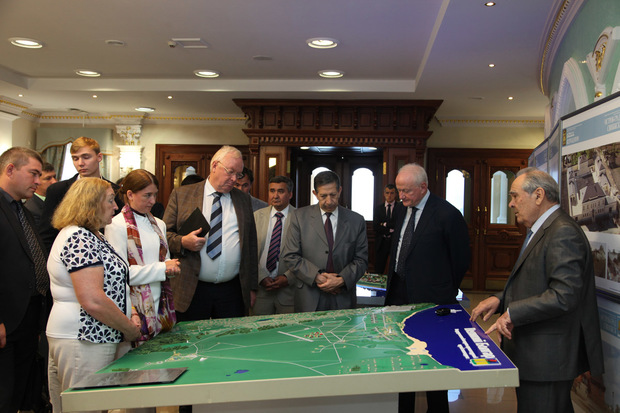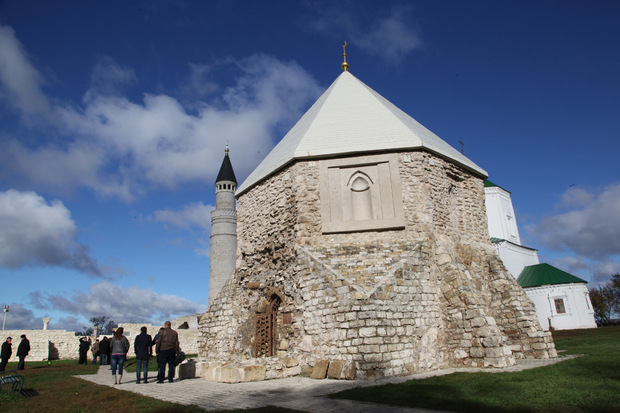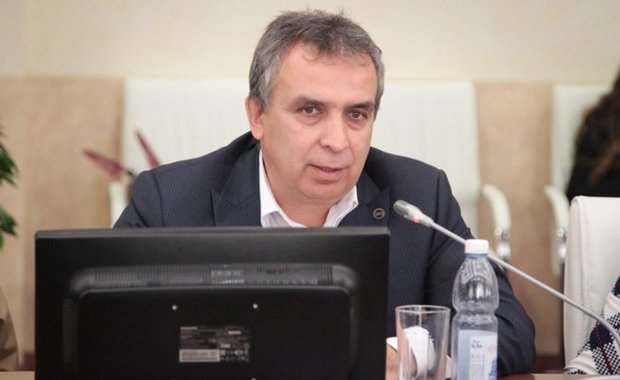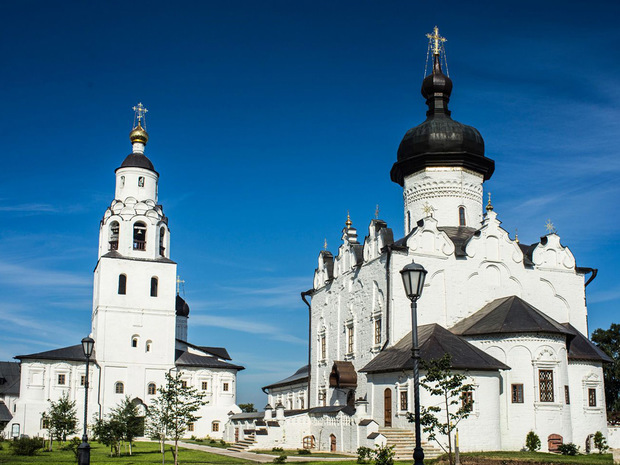‘The Shroud of Turin's dating was defined by radiocarbon method, the same thing we have to do in Sviyazhsk’
By holding the UNESCO Forum Kazan hopes to kill three birds with one stone: to improve the awareness about Kazan and Bolgar, to lobby Sviyazhsk and to become the operator of ‘Silk Way’ in Russia
The international forum 'The preservation of humanity as an imperative of sustainable development' devoted to the problems of 'humanitarian security of mankind', initiated by the Commission of the Russian Federation for UNESCO Affairs (headed by the Minister of Foreign Affairs Sergey Lavrov) will be held in Kazan from 14 to 16 September, 2016. The Cabinet of Ministers the Republic of Tatarstan and the KFU are also among the organizers of the forum. It became known about the decision to hold the forum in the Republic of Tatarstan and Kazan only in April. In fact, the authorities and the scientists of the Republic had a little less than 5 months for the preparation of the forum. The sponsor of the preparation is the Republican Commission for UNESCO, headed by Deputy Prime Minister of the Republic of Tatarstan Shamil Gafarov. The organizers do not announce the exact amount yet. But we know that the forum should serve as a launching pad for subsequent inclusion of the island town of Sviyazhsk (partly) in the World Heritage List of UNESCO. Besides, the Secretary of Silk Road Chamber of International Commerce is also invited to the forum — in Kazan they hope that RT will be the operator for its development in Russia.
Why do an expert of UNESCO Britta Rudolf and the Secretary of Silk Road come?
The theme of the forum — 'preservation of humanity', according to Executive Director of NGO 'Republican Fund of revival of monuments of history and culture' (one of the organizers of the forum) Tatiana Larionova, despite its complexity it is 'clear to anyone'. Human security, she notes, is the priority in policy of RT and was layed in the development strategy of Tatarstan 2030, as a major component: 'Economic tranformations are considered as means of improving the quality of life of people.' Larionova explained the decision of UNESCO to hold the forum in Tatarstan by the history background of the recent history of relations between Tatarstan and the United Nations, which began in 1998, when at the TISBI University there was established the UNESCO department, the same departments were later created in RT and the Kazan Institute of Culture. In 2003, in Kazan it was signed a communiqué on cooperation with UNESCO, it was created the Republican Committee, currently headed by Gafarov.

At last, a lot of work have been made on the inclusion in the UNESCO List of the Kazan Kremlin and the Bolgar reserve. Now they are working on Sviyazhsk (as it turned out, it is the works for the inclusion of Sviyazhsk in the List of UNESCO that has become one of the main reasons of activity of Tatarstan during the forum). Last year, St. Petersburg hosted a forum dedicated to the 70th anniversary of UNESCO. Here, 'it was first suggested that the theme of saving humanity must have a strong international consideration. The forum was attended not only by the European officials, including an expert of the International Council for preservation of monuments ICOMOS Britta Rudolf (she came in 2013 in the framework of Tatarstan authorities' work on inclusion of Bolgar in the UNESCO World Heritage List), but also, for example, Li Zhonghang, the Secretary of the Silk Road Chamber of International Commerce (SRCIC). Three sections of the forum, where they will discuss the problems of the 'new humanism' will be held, for obvious reasons, in Sviyazhsk. On 15 October, in Kazan, the city hall will host the main panel with the participation of Rustam Minnikhanov and Mintimer Shaimiev.
The forum is supposed to strengthen the position of Russia in UNESCO and to help with 'wow effect' to Sviyazhsk
As the organizers of the forum told at the press-conference in Tatar-inform, Tatarstan today is one of the few regions of the Russian Federation that has a number of UNESCO sites — only Moscow can compete. After when Bolgar was included in the World Heritage List and the work on the inclusion of Sviyazhsk began, 'the regions even formed a queue of those wishing to include their objects'. However, today in Russia there is no united institute for the preservation of cultural heritage. In Kazan they hope (it's one of the reasons the forum is held by the forces of Tatarstan) that the center will be opened there, especially that there is no other group of like-minded that would be able to work on these tasks. The second reason — 'the strengthening of the position of the Russian Federation in UNESCO'.

The third reason, according to the director of the Institute of International Relations, History and Oriental Studies of Kazan Federal University Ramil Khairutdinov, 'it's a small secret why part of the forum will be held in Sviyazhsk': 'It is important that our colleagues commented on the object, which we are planning to include in the List of UNESCO, I would like to hear their opinion.' Obviously, Tatarstan citizens expect the same 'wow effect', like after the visit to Bolgar, about which the members of the delegation to UNESCO in 2013 admitted. The following year, at the 38th session, the Bolgarian historical and archeological complex was finally included in the World Heritage List.
'They called our Kremlin Kazakhstan one…'
Another reason and the motive to hold the forum is the desire of the authorities and the scientific and cultural community of Tatarstan and Kazan to strengthen the awareness about the capital of Tatarstan and other local historic sites. As Rafael Valeyev said with regret at the press conference, the head of the resource center 'World cultural heritage' at the Kazan University, abroad if you say that you are from Kazan many think that 'it's somewhere in Kazakhstan': 'They called our Kremlin also Kazakhstan one… But during the Universiade they started to call it not Kazakhstan one but Kazan one. It was visited by more than 2 million people since then. And just as a reminder, the issue of inclusion of Sviyazhsk in the World Heritage List will be considered in the next year...'. According to Valeyev, in Kazan in his time there was signed the important documents of UNESCO. So, in 2005, it was adopted the Kazan Declaration, where it was first defined the concept of 'outstanding universial values'. Second, the Kazan Declaration was devoted to the problems of interfaith harmony.
Finally, another possibility that the forum will give Tatarstan concerns the same issues of interfaith harmony, in particular, the perception of Islam in the world. According to Larionova, today the world is concerned about terrorism, and 'the issues of perception of Islam as a religion, which is not always, alas, with a positive sign...'

Kazan hopes to be the operator on the development of 'Great Silk Road'
Besides, Kazan counting on the return of the spent on the forum money. So, according to Khairutdinov, the result of any forum is the emergence of new investments and new programs. In particular, it concerns the activities of RT on the accumulation of funds for the preservation of monuments — in Kazan they hope that after the forum there will be support from the Russian Federation. Besides, said the expert, Tatarstan expects to be the operator on the development of 'Great Silk Road' (apparently, for this reason, the Chinese was invited to the forum, see above).
In the end of the press conference, their participants made no secret of the main motives: awareness of historical objects, increasing tourist flow, the image of RT and Sviyazhsk. According to Larionova, 'the forum is held in favor of recognition':
'The figure for the Kremlin at more than two million tourists came after the Kremlin appeared on the map of the World Heritage List of UNESCO. It is the image of the Republic. In Ancient Bolgar in 2010, when we started the restoration works, the number of tourists amounted to 21 thousand people. Last year — under 300 thousand people. If to speak about Sviyazhsk, which name is heard often lately, in 2010 it was visited by 7 thousand tourists, and in 2015 — by 210 thousand! Here are the results of the work that affects economic policy and the image of RT.'

What the radiocarbon analysis of the objects in Sviyazhsk can reveal?
'In Tatarstan few people know about it, but there is such organization as ICCROM — the international organization for restoration of cultural heritage at UNESCO,' noted Rafael Valeyev. 'So due to the fact that Shaimiev wrote a letter to Putin, Russia that for a long time did not participate in the work of this organization, did not pay contributions, is back again in the ICCROM. And now our experts can participate in workshops and practical work on the restoration. This is important to us. Why? The same Sviyazhsk — we attract professionals from America, Belgium. How the dating of the famous Shroud of Turin was defined by radiocarbon method, the same thing we have to do today...'
It is known that a number of researchers on the basis of radiocarbon analysis, obtained in 1988, concluded that the Shroud was made in the Middle ages, in the XIV century, and that it is not the particular shroud in which was wrapped the body of Christ. The attempt to nominate the island town of Sviyazhsk simultaneously with the complex of Bolgar as a World Heritage site were undertaken in 2013. But at the last moment Russia withdrew the application. The reason was the recommendation of the experts of ICOMOS, the International Council on monuments and places of interest (and Britta Rudolf), because on the territory of ancient settlements in the course of reconstruction works there were built 'new buildings'. In the end, the next application was filed for 2017, but already partially — the Sviyazhsk Virgin Convent of the Dormition, founded in 1555, and the wooden Trinity Church, built in 1551. What a radiocarbon analysis may show in their case — will be interesting to know. It is obvious that modern replicas would not pass any analysis.